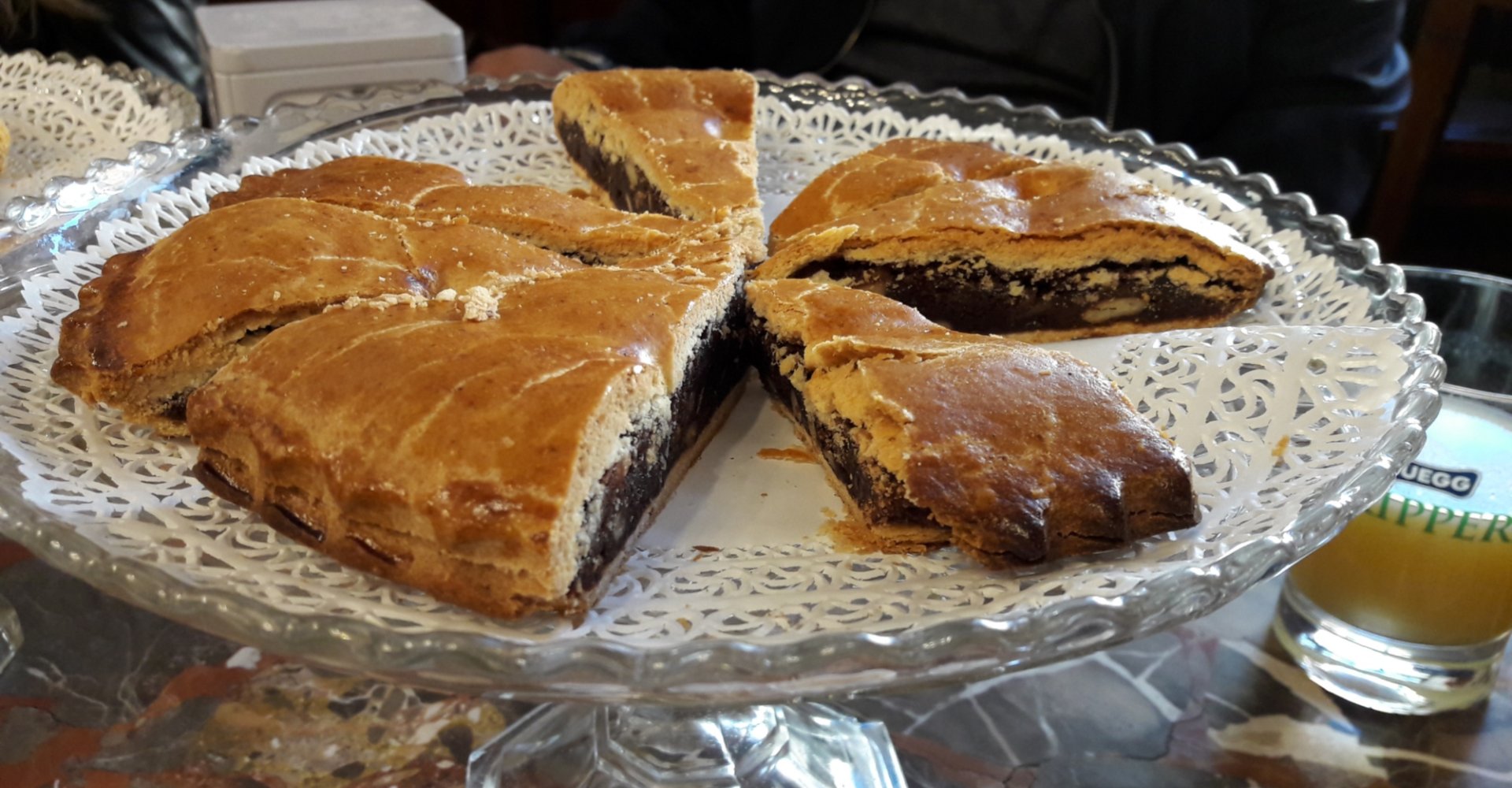Spongata of Lunigiana

An ancient dessert, the undisputed protagonist of the winter months and holidays
There is nothing better than a Lunigiana Spongata to celebrate Christmas holidays or simply to sweeten a cold winter day, although this dessert is produced and consumed all year round.
The first historical information dates back to the 15th century in Emilia Romagna, when in 1454 this particular cake was sent as Christmas gift to the Duke of Milan Francesco Sforza and Borso d'Este.
To date, there is no doubt that the Spongata (or sometimes spungata , whose name probably derives from spungia or spunga , that is sponge) is a very particular dessert: it is at the same time distinctive and changeable, well rooted in tradition but known in a lot of variations, and deeply linked to the pastry tradition, but is often also prepared at home. The spongata can be considered an Apennine dessert, present in numerous areas of Emilia, but it is also found in upper Tuscany and the Eastern Liguria. Here every valley, every locality, every family keeps its precious recipe.
Characteristics
The spongata is a long-life dessert, which was usually prepared in the autumn months to be consumed at Christmas. It is round and flattened, covered with a particular shortcrust pastry, dry and thin, unleavened, formerly imprinted with wooden molds, which envelops the filling, the true heart of the cake: honey, orange, candied fruit, raisins, almonds, walnuts, hazelnuts, cinnamon, fig or apple jam, chopped dried figs, cocoa, toasted bread or amaretti, these are just some of the ingredients used to make the filling of traditional spongata.
In Lunigiana, the most famous is undoubtedly the Pontremolese spongata, today produced by all the historic pastry shops of the city: it is a particularly rich and delicious variant, characterized by the use of cocoa, linked to ancient local traditions, but also to the presence of numerous families of Swiss origin who arrived in Pontremoli in the 19th century to open or manage cafés and pastry shops. Among these, we can mention the historic Caffè Ceppellini (the Italianized name of the German Zeppelin) or the famous Caffè degli Svizzeri (Café of the Swiss), still open today in Piazza della Repubblica.
The spongata is a long-life dessert, which was usually prepared in the autumn months to be consumed at Christmas. It is round and flattened, covered with a particular shortcrust pastry, dry and thin, unleavened, formerly imprinted with wooden molds, which envelops the filling, the true heart of the cake: honey, orange, candied fruit, raisins, almonds, walnuts, hazelnuts, cinnamon, fig or apple jam, chopped dried figs, cocoa, toasted bread or amaretti, these are just some of the ingredients used to make the filling of traditional spongata.
In Lunigiana, the most famous is undoubtedly the Pontremolese spongata, today produced by all the historic pastry shops of the city: it is a particularly rich and delicious variant, characterized by the use of cocoa, linked to ancient local traditions, but also to the presence of numerous families of Swiss origin who arrived in Pontremoli in the 19th century to open or manage cafés and pastry shops. Among these, we can mention the historic Caffè Ceppellini (the Italianized name of the German Zeppelin) or the famous Caffè degli Svizzeri (Café of the Swiss), still open today in Piazza della Repubblica.



